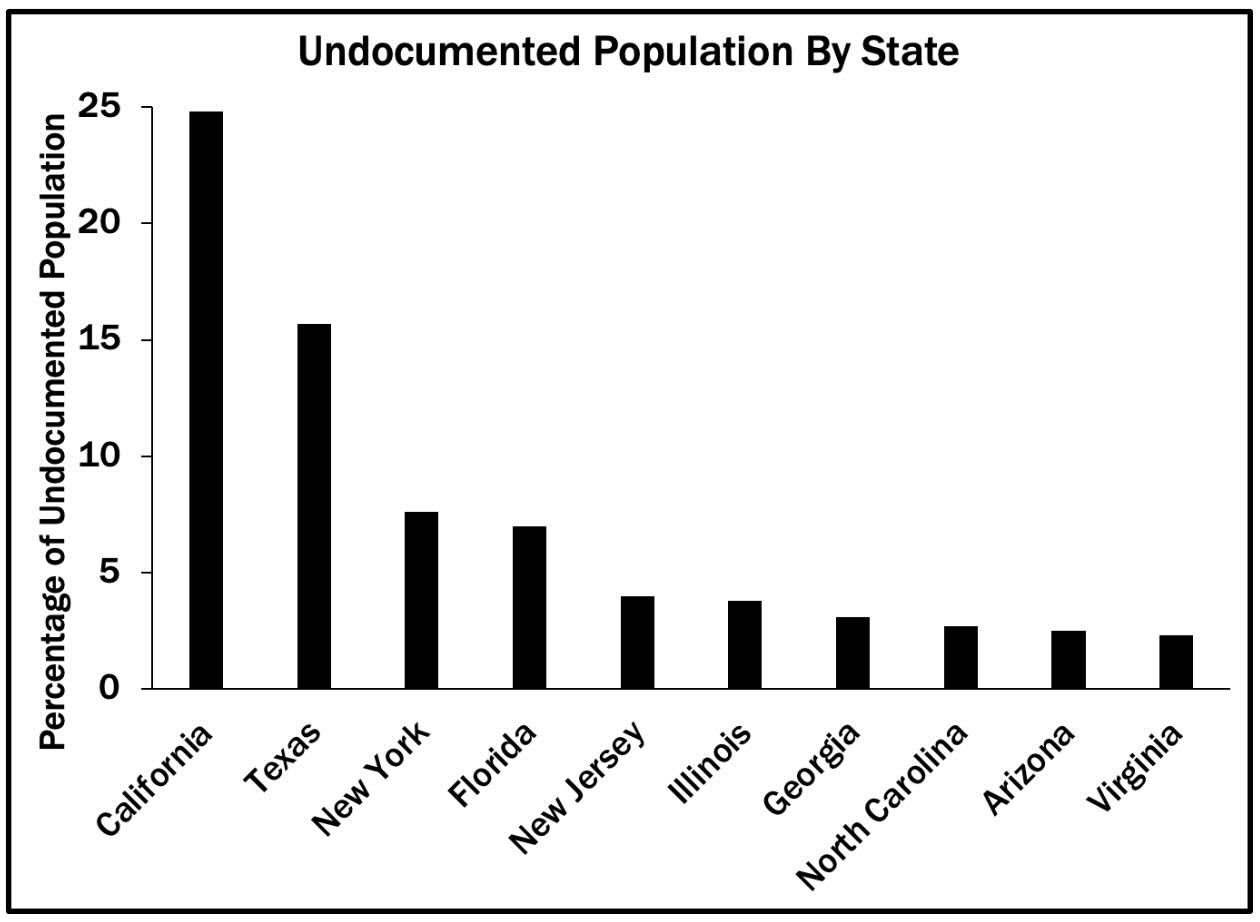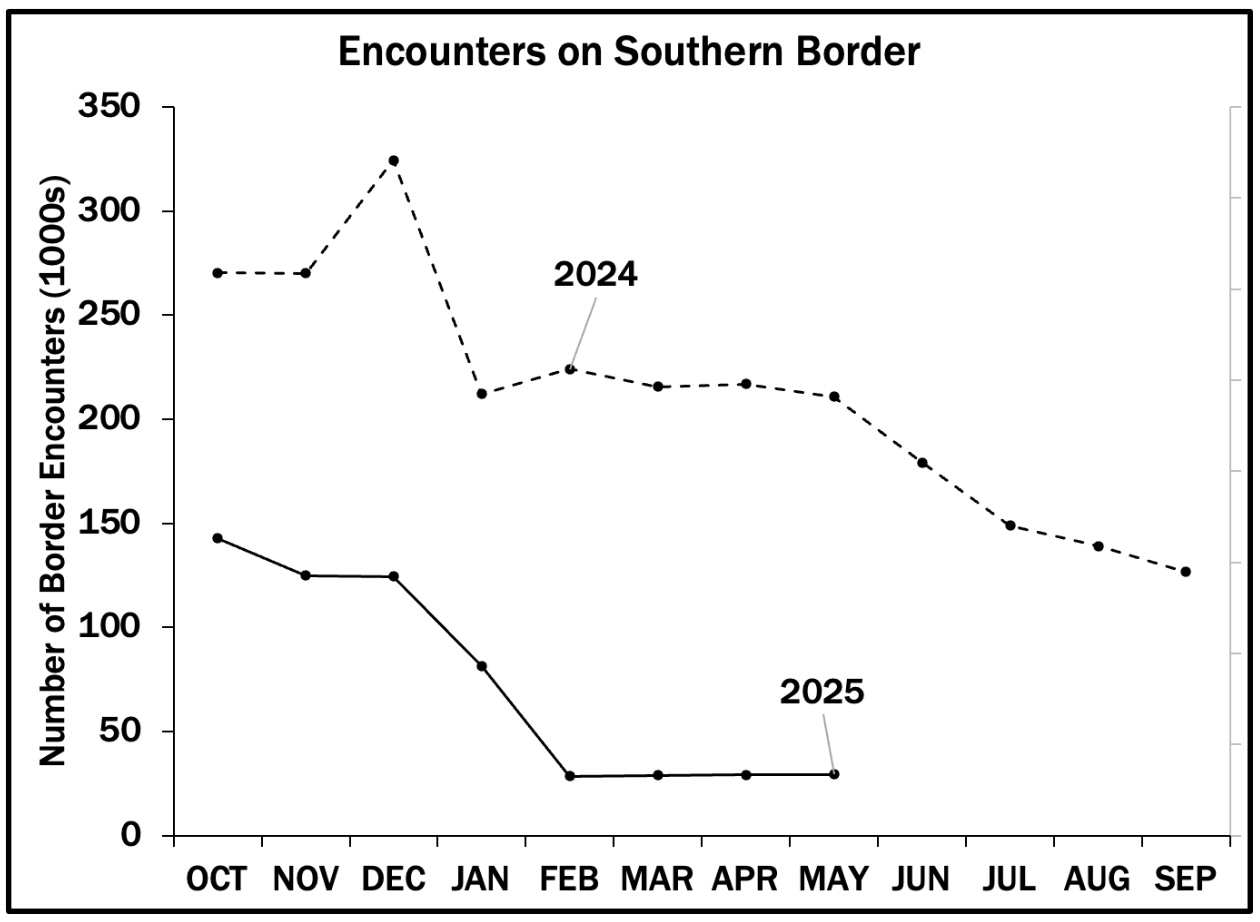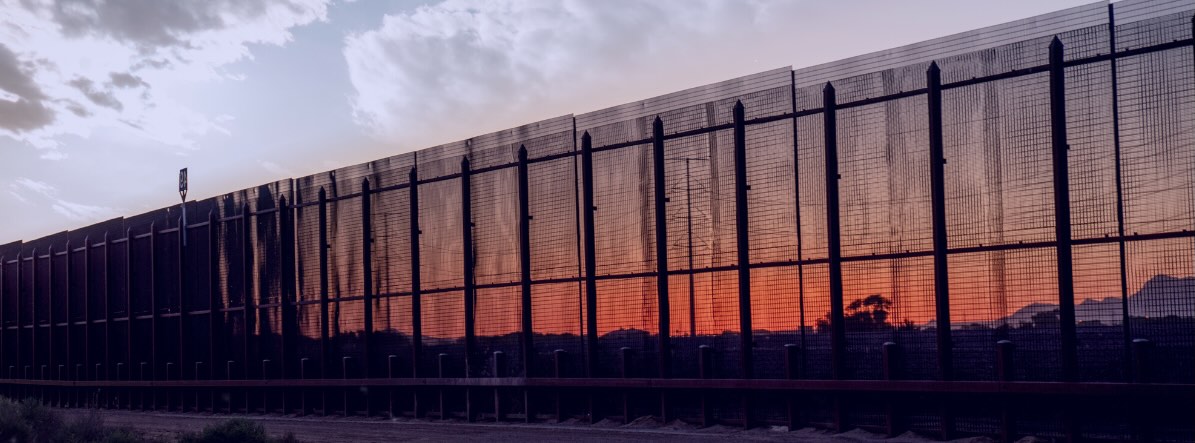What you need to know
Border security has been a defining issue in American politics for decades. The 2025 Budget Reconciliation legislation, the One Big Beautiful Bill Act (OBBBA), implements significant changes in U.S. border policy. In this brief, we describe these new initiatives and update our data on border encounters.
- Over the last five years, the number of undocumented individuals living in the U.S. has increased.
- The federal budget for Fiscal Year 2025 includes funding for several new border control initiatives.
- Customs and Border Protection data shows a decline in border encounters in 2025 compared to earlier years.
How many people are in the U.S. without authorization?
Before the COVID-19 pandemic, estimates of unauthorized immigrants in the U.S. hovered slightly above 11 million. By 2023, that figure grew to approximately 13.7 million. Today, estimates range from 11 million to 18 million. The figure below uses data from the Migration Policy Institute to show the 10 states with the largest share of unauthorized immigrants. California has the highest share, about a quarter of the nation’s total, and the highest number of unauthorized immigrants, roughly 2.7 million.

What Border Security Measures Does the Bill Fund?
The OBBBA allocates more than $70 billion in border security initiatives. The measures cover physical security and upgrades, surveillance technology, and personnel expansion. The provisions include:
- $46.5 billion to complete a physical border wall, filling all remaining gaps from the Pacific Ocean to the Gulf of Mexico.
- $5 billion for U.S. Customs and Border Protection (CBP) facility upgrades.
- $4.1 billion to hire 3000 new Border Patrol agents, 5000 Office of Field Operations officers, and additional support personnel.
- $2.7 billion for new surveillance technology.
- $2 billion for annual bonuses and signing incentives to recruit and retain CBP personnel amid staffing shortages.
- $450 million for Operation Stonegarden, which supports joint operations between CBP and state/local agencies.
In addition to the infrastructure and staffing expenditures, the legislation includes provisions to carry out large-scale deportations and eliminate the policy commonly known as “catch and release,” where people who claim asylum are allowed to live in the United States while their asylum claims are adjudicated. Specific funding includes:
- $45 billion for increased detention capacity so that individuals remain in custody instead of being released.
- $14 billion to fund transportation and detention of deportable individuals.
- $8 billion for the Expansion of ICE’s authority and staffing, including the hiring of 10,000 new ICE officers
The bill also includes a provision to reimburse states like Texas for past expenditures on border security.
What would these changes mean on the ground?
Supporters argue these changes will discourage illegal entry and reverse what they see as permissive policies of the previous administration. Aside from OBBBA, some border security elements are already being implemented through executive action. Since President Trump’s return to office, the Department of Homeland Security (DHS) has resumed border wall construction using previously-appropriated funds and accelerated the building process by granting environmental waivers.
At the same time, recent administrative changes appear to have reduced border encounters. The figure below shows Customs and Border Protection data on the number of encounters with individuals between ports of entry for Fiscal Years 2024 and 2025 (Fiscal Years begin on October 1st and end on September 30). The chart shows a decline for 2025 compared to 2024.

The Takeaway
The OBBBA adds substantial funding for immigration enforcement, including new personnel, barriers, technology, and deportation infrastructure.
These provisions reflect a new approach to border management.
Even before these policy changes take effect, encounter data show a decline in border entries.
Enjoying this content? Support our mission through financial support.
Further reading
Office of Homeland Security Statistics. (2024). Estimates of the unauthorized immigrant population residing in the United States: January 2018–January 2022. U.S. Department of Homeland Security. https://tinyurl.com/4cb6kvdz (Accessed 7/23/2025)
Congressional Research Service. (2023). The U.S. Immigration System: Overview. Library of Congress. https://tinyurl.com/2mzjkhap (Accessed 7/23/2025)
U.S. Department of Homeland Security. (2024). U.S. Customs and Border Protection: An overview. https://tinyurl.com/25cdzes7 (Accessed 7/23/2025)
Sources
U.S. Customs and Border Protection. (2023). DHS issues new waivers to expedite new border wall construction in Starr County, Texas. https://tinyurl.com/mpnexb8w (Accessed 7/23/2025)
Migration Policy Institute. (2024a). A turning point? New data show unauthorized immigrant population in U.S. rebounding. https://tinyurl.com/3wbp4rfp (Accessed 7/23/2025)
Migration Policy Institute. (2024b). Unauthorized immigrant population in U.S. continued to rebound in first half of 2023. https://tinyurl.com/4e22yfft (Accessed 7/23/2025)
House Committee on Homeland Security. (2025). What they are saying: Homeland Republicans advance a bold push for border security funding; Democrats offer muted response. https://tinyurl.com/22ckfusz (Accessed 7/23/2025)
House Committee on Homeland Security. (2025). Homeland Republicans advance funding recommendations to continue President Trump’s border security victory, bolster frontline personnel for years to come. https://tinyurl.com/2nhfsz24 (Accessed 7/23/2025)
Cohen, N. (2025). $6.2B CBP hiring plan features considerable uncertainty. Federal News Network. https://tinyurl.com/mr28n4tr (Accessed 7/23/2025)
American Immigration Council. (2024). House reconciliation bill proposes sweeping changes to immigration enforcement and border policies. https://tinyurl.com/ydnypty8 (Accessed 7/23/2025)
Rep. Cloud, M. (2024). Texas could soon be reimbursed for border security spending. House of Representatives. https://tinyurl.com/mnrssejk (Accessed 7/23/2025)
Contributors
William Bianco (Research Director) is Professor of Political Science at Indiana University and Founding Director of the Indiana Political Analytics Workshop. He received his PhD from the University of Rochester. His teaching focuses on first-year students and the Introduction to American Government class, emphasizing quantitative literacy. He is the co-author of American Politics Today, an introductory textbook published by W. W. Norton now in its 8th edition, and authored a second textbook, American Politics: Strategy and Choice. His research program is on American politics, including Trust: Representatives and Constituents and numerous articles. and a current grant from the Russell Sage Foundation on the sources of inequalities in federal COVID assistance programs. His op-eds have been published in the Washington Post, the Indianapolis Star, Newsday, and other venues.
Lindsey Cormack (Content Lead) is an Associate Professor of Political Science at Stevens Institute of Technology and the Director of the Diplomacy Lab. She received her PhD from New York University. Her research explores congressional communication, civic education, and electoral systems. Lindsey is the creator of DCInbox, a comprehensive digital archive of Congress-to-constituent e-newsletters, and the author of How to Raise a Citizen (And Why It’s Up to You to Do It) and Congress and U.S. Veterans: From the GI Bill to the VA Crisis. Her work has been featured in The New York Times, The Washington Post, Bloomberg Businessweek, Big Think, and more. With a drive for connecting academic insights to real-world challenges, she collaborates with schools, communities, and parent groups to enhance civic participation and understanding.









